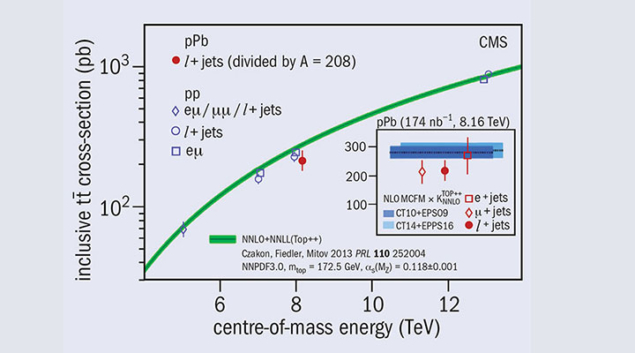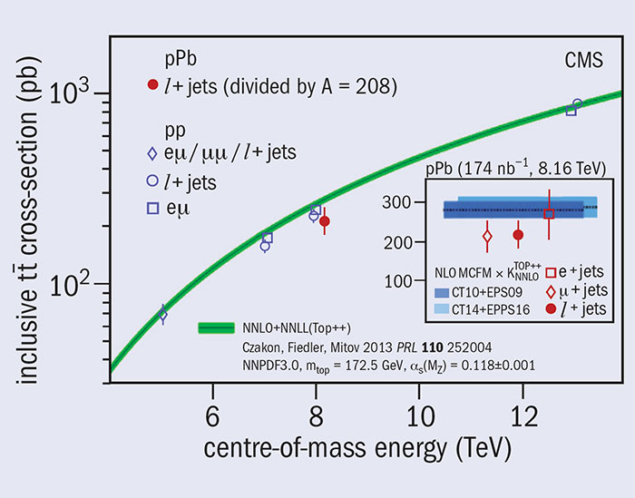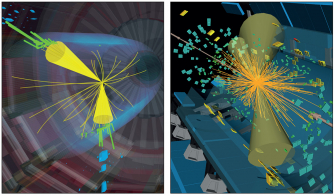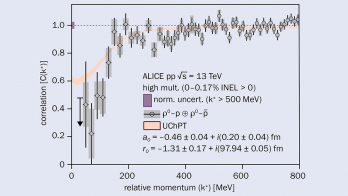

The top quark, the heaviest elementary particle in the Standard Model, has been the subject of numerous detailed studies in proton–antiproton and proton–proton collisions at the Tevatron and LHC since its discovery at Fermilab in 1995. Until recently, however, studies of top-quark production in nuclear collisions remained out of reach due to the small integrated luminosities of the first heavy-ion runs at the LHC and the low nucleon–nucleon (NN) centre-of-mass energies (√sNN) available at other colliders such as RHIC in the US.

Proton–lead runs at √sNN = 8.16 TeV performed in 2016 at the LHC have allowed the CMS collaboration to perform the first-ever study of top-quark production in nuclear collisions.
Top-quark cross-sections at the LHC can be computed with great accuracy via perturbative quantum chromodynamics (pQCD) methods, thus making this quark a “standard candle” and a tool for further investigations. In proton–nucleus collisions, in particular, the top quark is a novel probe of the nuclear gluon density at high virtualities in the unexplored high Bjorken-x region. In addition, a good understanding of top-quark production in proton–nucleus collisions is crucial for studies of the space–time structure of the quark–gluon plasma formed in nucleus–nucleus collisions.

Once produced, each top quark decays promptly into a W boson plus a bottom quark, with the W boson further decaying into either a charged lepton and a neutrino or a pair of light quarks. To identify pair-produced top quarks, CMS therefore selected events containing one isolated electron or muon, two “b-tagged” jets, and two jets that fail b tagging. The amount of signal in the selected sample is inferred by a fit to the invariant mass of the two untagged jets, interpreted as W boson decay products (W → qq′). The amount of non-top background is constrained by two complementary event samples, with zero or one b-tagged jets, also included in the fit. In this way, the background behaviour in this (so far unexplored) phase-space region and the b-tagging efficiency are evaluated in situ with only minimal assumptions, independent of prior inputs. As a validation, the outcome of the fit is used to model the signal and background invariant mass distributions of the top-quark candidate in the hadronic decay channel (t → Wb → qq′b), which are in agreement with the data (see figure).
The excess of events with respect to the background-only hypothesis corresponds to a significance of more than 5σ, even under the most conservative assumptions. The measured top-pair cross-section is consistent with the expectations from scaled proton–proton collision data as well as pQCD predictions at next-to-next-to-leading order with next-to-next-to-leading-log accuracy (figure, right). This result paves the way towards future studies of top-quark production in the hot and dense matter created in nucleus–nucleus collisions.








